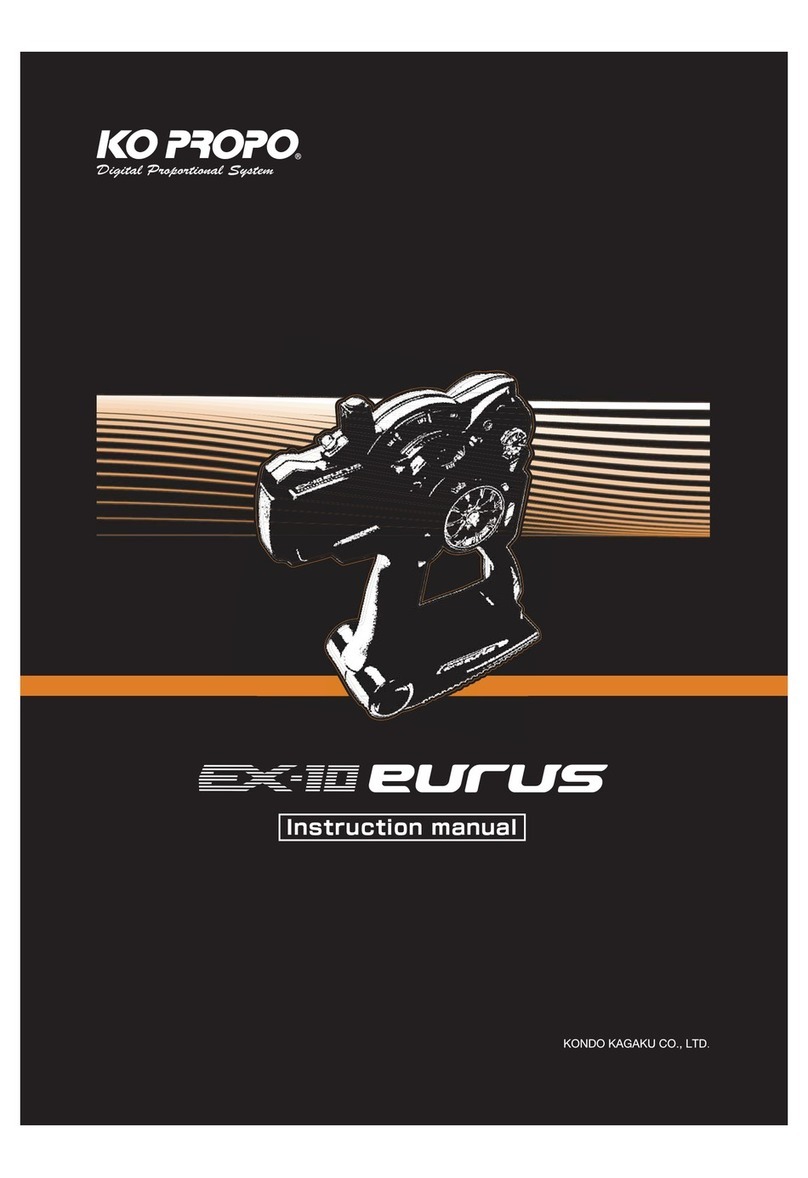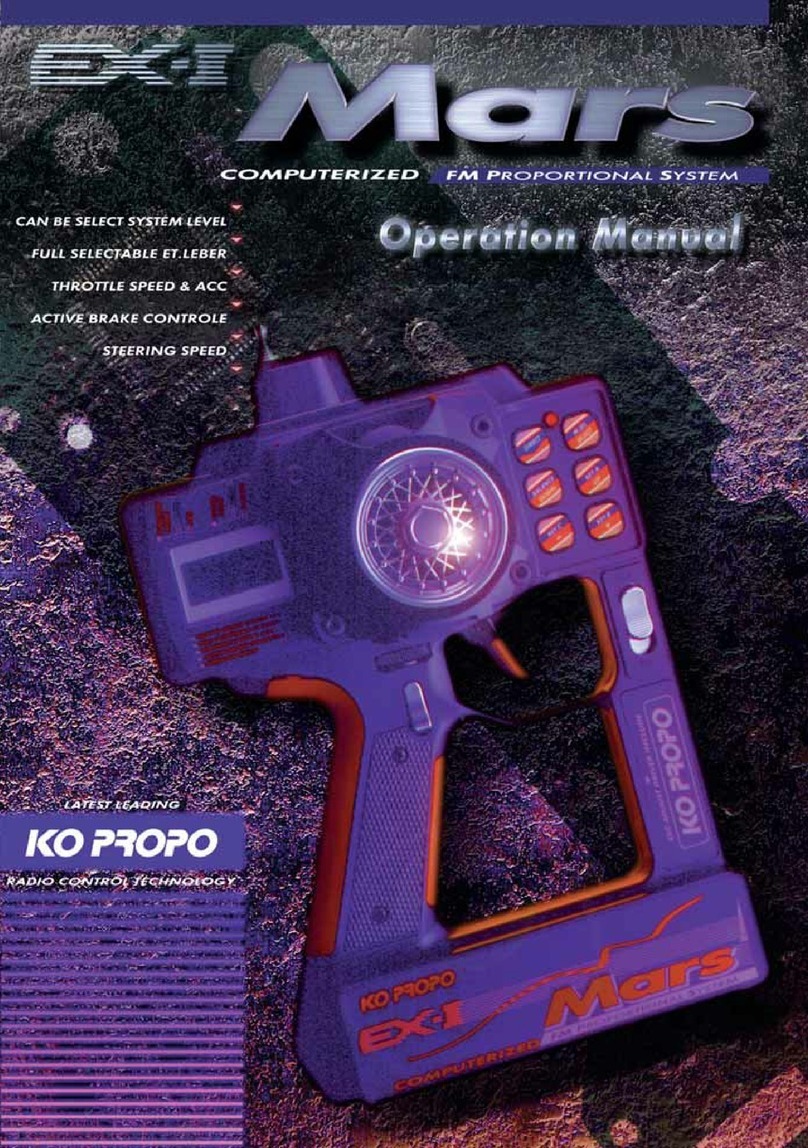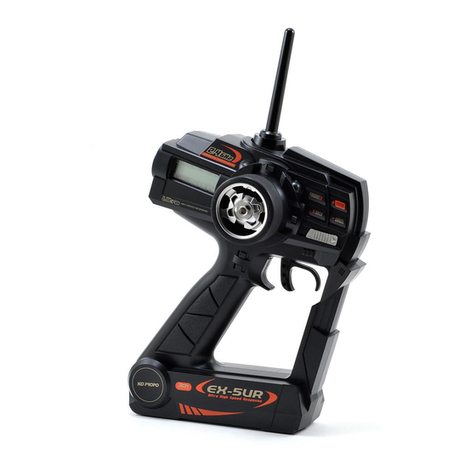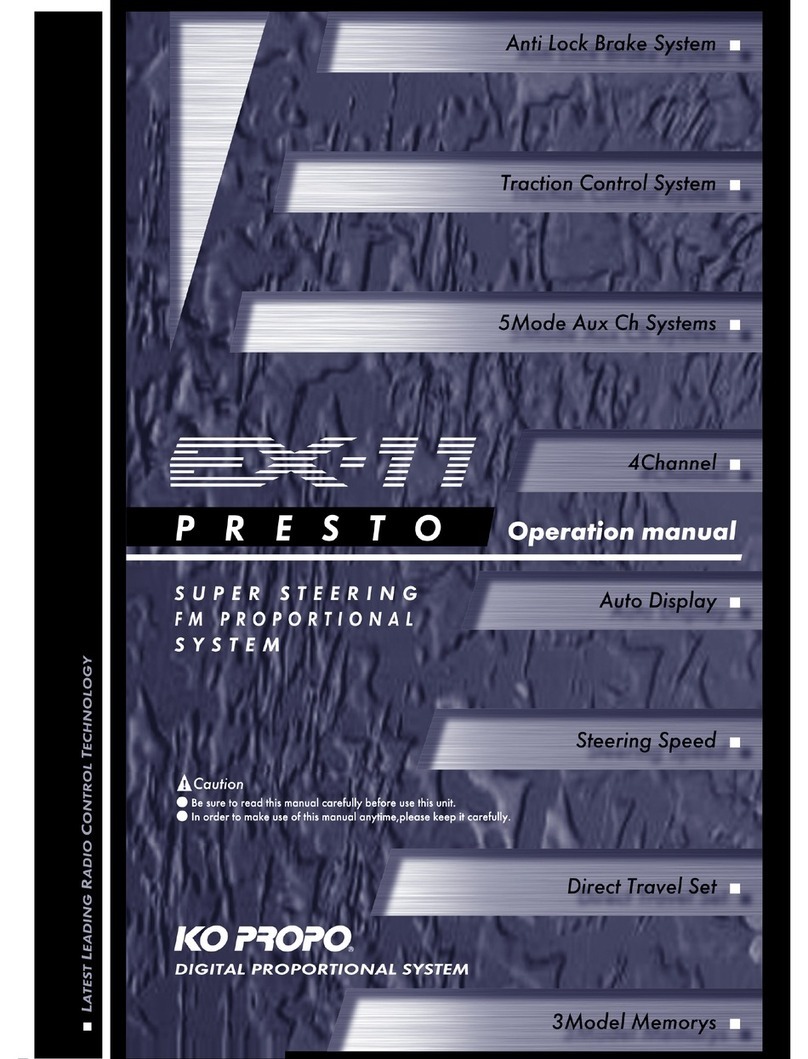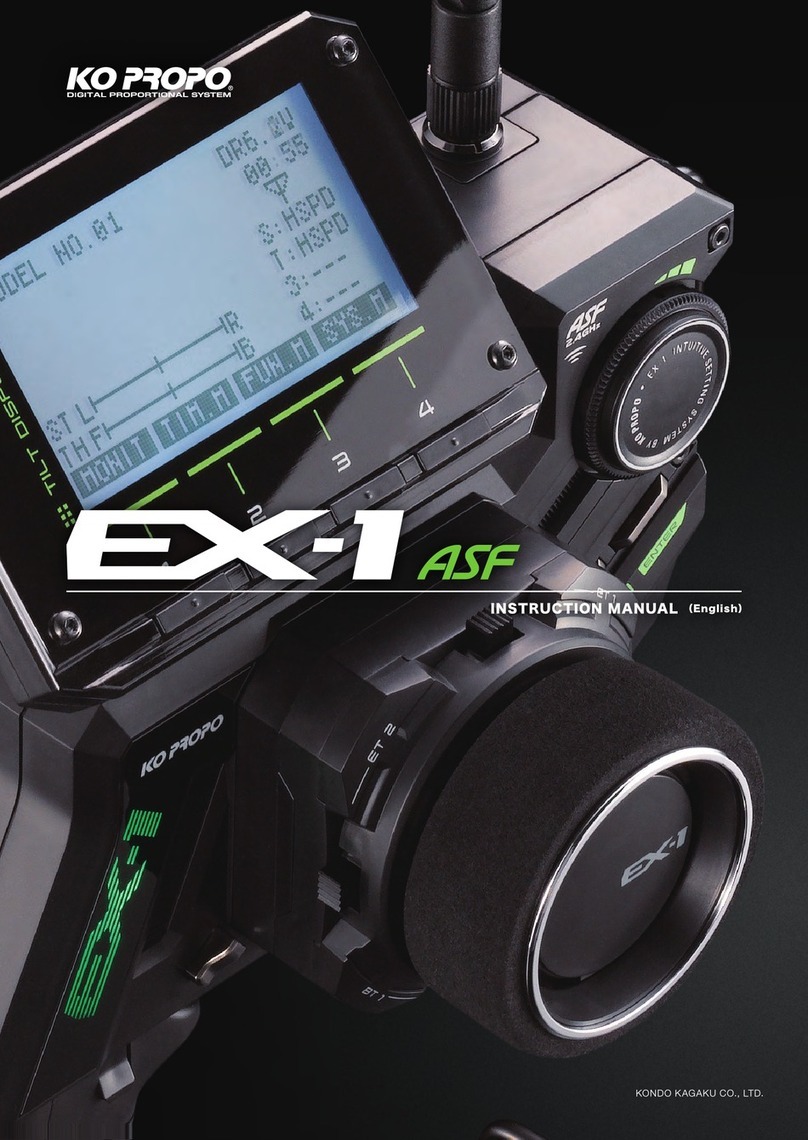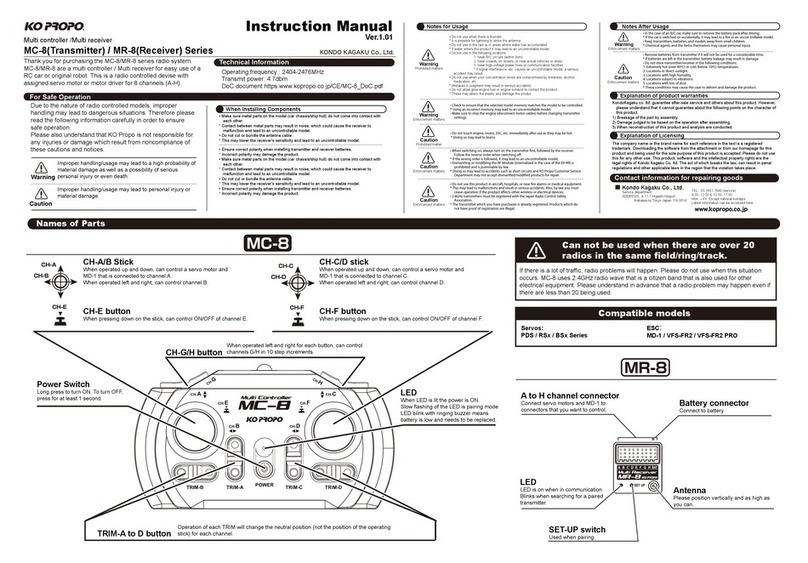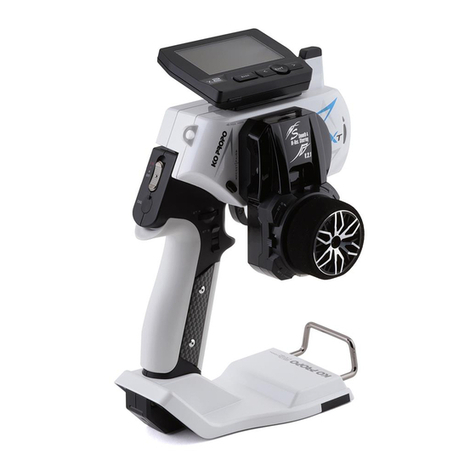With the nature of radio controlled model, improper usage may result in serious accidents. In order to avoid these
circumstances, please read following contents before use. We cannot be held responsible for problems encountered
when not complying with these cautions and notices.
●
Make sure metal parts do not come in direct contact to model (chassis/ship hull)
by vibration.
Noise of metal parts may result in malfunction of receiver, and the model may run
out of control.
●Do not cut nor bundle receiver antenna with other cables.
It may result in decreasing the sensitivity of receiver and may result in the model
running out of control.
●Note polarity when installing batteries to transmitter and receiver.
It may damage R/C units.
●Be sure to connect receiver, servo and switch connectors correctly.
If connections are loosened by vibration, the model may run out of control.
●Attach receiver using thick double-sided tape to avoid direct contact with other
parts.
Strong shock and vibration may result in the model running out of control.
●Operate servo to check that there are no unnecessary forces onto the push rod.
It may damage the servo or increase the consumption of batteries.
●Make sure to use rubber grommet to attach servo and be sure that the servo is
not touching mechanism plate directly.
The vibration may damage the servo and the model may run out of control.
●Use genuine KO transmitter, receiver, servo, speed controller and optional parts.
We cannot be held responsible for problems encountered when using with other
maker's products.
●Do not use in thunderstorms.
There is possibility of lightning striking the antenna.
●Do not use in the rain or in a location where water might get in.
The unit may become wet in and run out of control.
●Do not use in the following places.
1. Near to other radio control circuits (within 3km).
2. Near to people or on the street.
3. Near electric wires or communication facilities.
In the case of the model running out of control, dangerous situations will occur.
●Do not run the model when you experience difficulties in concentration through
tiredness, alcohol or medication.
The miss-judgment may result in accidents.
Warning! Failure to observe the matter discussed in such an item
poses a serious threat of death or severe injury.
Caution! Failure to observe the matter discussed in such an item
poses a possibility of injury or damage to the equipment or property.
Caution when installing units
Notes on driving
Read carefully and fully understand the following instructions for safety use.
Warning!
Enforcement matters
Warning!
Prohibited matters
Warning!
Prohibited matters
5






